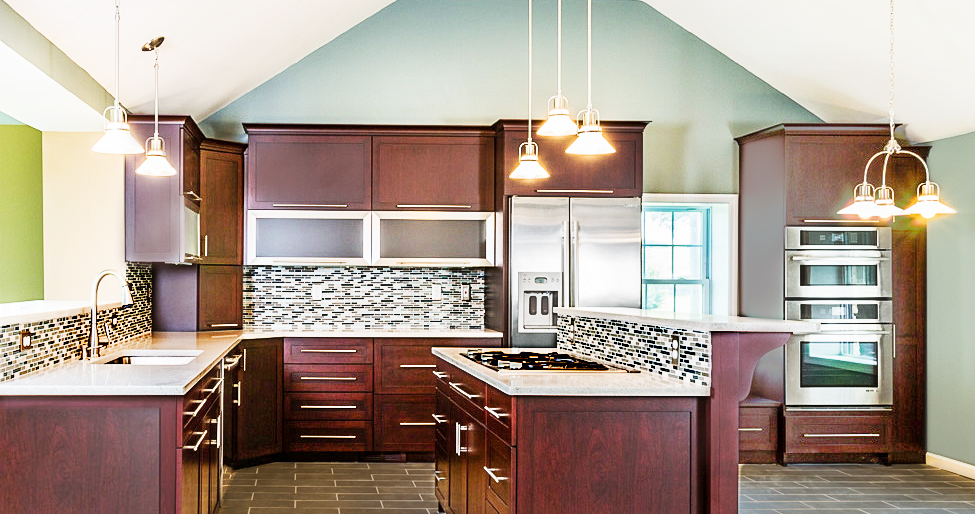
Defining Your Kitchen Design Style
Defining the design style you desire is a key step to take when remodeling your kitchen or bathroom. With so many resources out there today, it is sometimes difficult to try and narrow down all of the options to truly hone in on exactly how you want your new space to look.
We are overloaded between design shows, Houzz, and Pinterest, and it can be very overwhelming to pinpoint what will be right for you. Here are some tips that can help you get started on finding the design style that is right for your kitchen remodel:
1. Look at your existing design style and decor in your home. Did you recently purchase a new piece of furniture? Have you recently redesigned another space in your home? If so, those are probably good indications of what style you prefer. However, this may be the first room you are remodeling, and you are trying to figure our your style. Take inventory of what you like about your current decorating style, but also don’t neglect to take note on styles of which you would prefer to steer clear.
2. Start collecting ideas. Compile a variety of design elements to which you seem naturally drawn, and don’t read too much into the why behind what you like. After you do this, go back through your collection and look for similar elements. You may find a pattern start to appear, such as all the kitchens have flat panel doors or they were all painted in similar shades. It is easier to start seeing what it was about each photo that you liked when you can see them all together.
3. Delve deeper into your design style collection. After you have gathered an assessed your kitchen design ideas, start honing in and making notes on what you specifically preferred about each photo. If you are anything like me, you will most likely come across a few photos that you just don’t love anymore. That is okay! It is always good to keep reviewing the photos to see if you still like the designs as much as you did the first time.
4. Define your kitchen design style. After you have analyzed your photos and chosen your preferred design elements, it is time to define your style and design preferences. Below are the three most basic style categories with some of the most prominent elements they contain.
Traditional
Traditional kitchen styles are simple, classic and cozy. The color palette is often soft white or off-white, with the occasional splash of a bold color. A traditional kitchen can incorporate a variety of different styles, but it will bring in elements that conjures up homey and cozy feelings. Some may prefer cabinets with a raised panel door style, but a traditional kitchen could use inset doors instead of overlay doors. The finishes are often stained or painted in soft hues with a glaze. In this style, you will see more decorative accents being used such as corbels, feet, legs, and valances. Granite countertops are the most popular for the traditional style; and the hardware finishes are typically a brushed nickel or oil-rubbed bronze. Often times the appliances will receive matching wood panels so that they are concealed to blend in with the rest of the cabinetry.
Contemporary
Contemporary kitchen styles, or modern kitchens, are generally very simplistic and minimal. They tend to incorporate horizontal lines and streamlined elements, while avoiding the clutter of too many design details or ornamentation. It is almost like taking a more artistic or architectural approach to design. Typically, a contemporary kitchen design will consist of cabinets with a flat panel door or a simple shaker style door that is either painted or stained. The use of exotic wood veneers or high-gloss paints are appropriate with this style. Materials used are often man-made, such as stainless steel appliances, concrete countertops and frosted glass panes. Designers lean towards metal finishes, such as chrome and brushed nickel. The appliances are often all professional style and stainless steel with decorative stand-alone metal hoods to complete the contemporary style.
Transitional
Transitional kitchen styles take on a combination of different designs, integrating the old with the new. Because it incorporates a variety of elements, this style has become very popular. Think of it as almost an updated traditional design. You may have some traditional elements such as the style of the door, but then the finish is something more clean and fresh like white or gray paint. You may see simple white cabinets with a rustic stained island, and then there may be some different metal finishes thrown in the mix. A transitional kitchen design is a great option if you have several different styles you like or if you and your spouse have differing tastes. It works well in any space, and can be altered to fit anyone’s style.
Taking the time to gather and organize your preferred design elements and styles means less confusion and anxiety when the time comes to choosing the materials that will go into your new kitchen or bathroom. Flip through magazines, create ideabooks on Houzz and talk to your designer – and have fun creating the kitchen or bathroom of your dreams.
